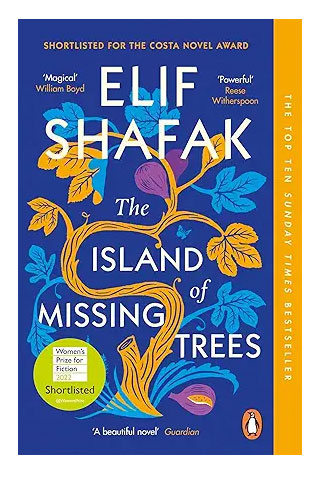Dry Drayton Book Group choice September 2023

This book was shortlisted for the Women’s Prize for Fiction in 2022; Elif Shafak is a British Turkish author and this is her twelfth and most recent novel.
The story is spread over 2 timelines, 2010s in London and 1970s Cyprus, following the lives of Kostas and Defne and their 16-year-old daughter Ada. Kostas is a Greek Cypriot and an evolutionary ecologist and botanist now living in London; Defne, a Turkish Cypriot, is Kostas’ wife who worked in Cyprus as an archeologist with the Committee for Missing Persons (CMP), a UN-backed organisation looking to recover the bodies of the people who went missing in the conflict of 1974. As the story begins we discover that Defne has recently died although the cause of her death is only revealed in the latter part of the book. Ada is grieving the loss of her mother and struggling to come to terms with her mother’s death which is driving Ada and her father apart. Then Meryam, Defne’s sister, arrives in London which initially infuriates Ada as none of Defne’s family attended her funeral or have been in touch since Defne’s death. It is clear that Ada knows nothing of their Cypriot history or their relatives as Defne’s and Kostas’ relationship was a forbidden love in Cyprus. A history project to interview a relative about their past provides an opportunity for Ada to talk to Meryam about her parents’ teenage years in Cyprus and they begin to develop a close relationship as well as helping to bring Ada closer to her father, Kostas.
The chapters are interspersed with a third narrative provided by the fig tree that has grown from a cutting from a very old tree in Cyprus which Kostas rescued and nurtured. At the start of the novel Kostas buries the fig tree to protect it from the harsh London winter. The tree then provides commentary on aspects of the characters’ pasts, the history of Cyprus, and information about the ecosystems in Cyprus. At the end of the book, as Kostas unburies the tree, it becomes clear that the tree embodies the spirit of Defne.
The group agreed that this was an enjoyable book with some unusual and interesting features such as the fig tree narrative. There is a lot of symbolism which runs throughout the story and it is evident that the author had conducted a significant amount of research both into the history of Cyprus and the more recent ecological theories. However there was a consensus that much of this research was included to the detriment of the story which, at times, became disjointed. The group felt that there was scope to give more detail about Ada’s remarkable outburst and her subsequent developing relationship with her aunt. The story also did not give much information about Defne’s life in London and her evident struggles to adjust to her life there. The group felt that the time lag between Kostas leaving the island in 1974 and meeting up with Defne again some twenty years later lacked credibility given how devoted they were as a couple and the risks they ran to be able to meet up on dates in their youth. However there were many themes woven through the story which hold the reader’s interest and provide some unexpected plot twists. Some of the group thought that the language suggested that the book had been translated into English. It is clear that the author writes in English and so on reflection, the group thought that perhaps her writing reflected her mixed cultural background and the disconnect was in her emotional rather than grammatical syntax.
Leave a comment